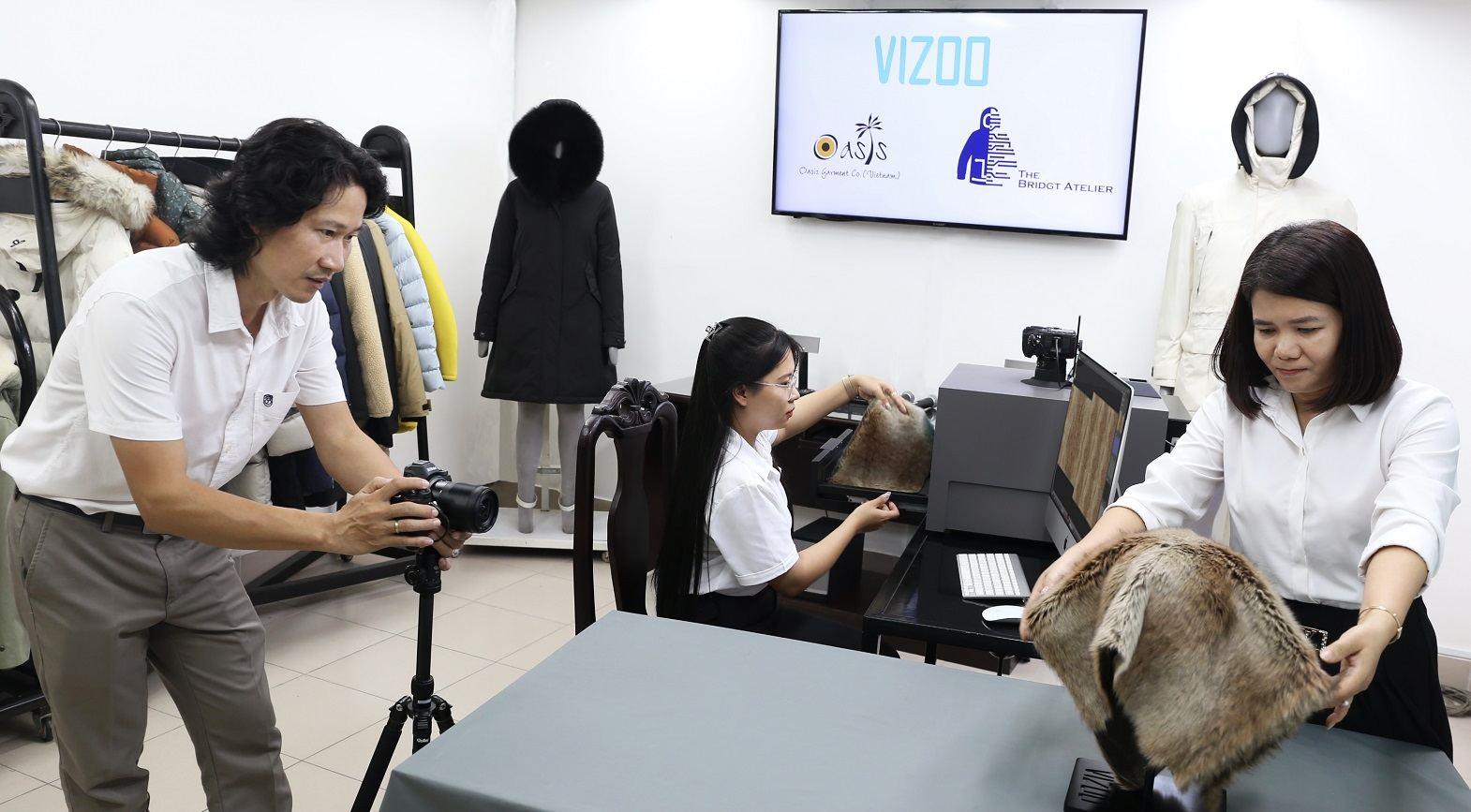As a step closer towards the seamless alignment of physical and digital fabric samples, Vizoo GmbH, pioneer in material digitisation technologies, has launched the Drape Validation Workflow—a consistent and software-independent method to assess digital fabric quality.
Validation bolsters the trust in Digital Sampling and builds a scalable workflow from vendor to brand
Could 3D asset creation become more scalable? Could standards and processes become easier to adopt? Questions like these are typically heard from industry professionals implementing Digital Product Creation (DPC), because while DPC technologies are now widespread in the apparel industry, standards and processes across the ecosystem are yet to mesh intuitively.
For fashion brands, transforming their supply chains and adopting 3D technologies can equate to requesting digital materials from fabric suppliers. This imposes expectations on suppliers that they know how to create quality digital twins and evaluate the data, while brands are also pressured to take the time and relay their quality expectations clearly to their vendors.

Due to the lack of quality standards, this point of communication between brands and suppliers can create a relentless loop until expectations from both sides land on the same page.
Herein lies the dilemma. To reap the benefits of DPC— aside from an expansion of skillset, investment of time and resources—trust in the technology and in the process is required from both parties. And that is easier said than done.
Launching the most user friendly, interoperable Workflow to the apparel industry
Another complication to the material digitisation process is a general lack of uniformity in the physical measurement and 3D simulation per software.
Martin Semsch, Vizoo CEO, shares: “We realised that there is a gap in ensuring accuracy and consistency across apparel 3D CAD software while building our PhysXTM Database. We needed a way to prove the data is of high quality. As we saw no such thing available out there on the market, we developed the Drape Validation Workflow to make it easier to verify the creation of a digital twin – no matter what software is used.”

To develop this Workflow, the Vizoo team conducted further research on the needs of all digitisation users and the best physical drape reference shape. Several rounds of testing and workshops with various brands followed by an in-depth collaboration workshop with technology provider Browzwear helped to increase accuracy and fine-tune the process. Ultimately, to ensure the important consistency in results across different tools, acceptance testing was done using CLO3D and Optitex.
Proven implementation with fast ROI
A major fashion group struggled reviewing digital fabric submissions from their suppliers due to their previous time-and resource-consuming QA process. This led them to entrust Vizoo the implementation of the new Drape Validation Workflow amongst its vendors. Over the past three months, training sessions amongst 5 material digitisation hubs and 11 fabric mills led to the successful implementation across several regions in APAC and EMEA.

Today, the corporate office brand is efficiently scaling up the vendors digital capability and communicating quality expectations, ensuring a uniform and high standard digital submission and eliminating back-and-forth review processes.
Ongoing implementation and continued adoption
Within six months of its release, the widespread adoption of the Vizoo Drape Validation Workflow underscores its value in enhancing efficiency and standardisation in the industry.
Aside from the above-mentioned fashion group, several fashion brands and three more Material Service Hubs adopted the Drape Validation Workflow for their individual Digital Transformation needs.
The Workflow also helps bonprix (part of the Otto Group) stabilise its internal digitisation process, as explained by Lisa Hoppen, Fabric Coordinator, from bonprix: “At bonprix, we are using the Drape Validation Workflow to build up our digital material library and ensure accuracy to our material parameters. It provides a clear guideline on how to assess virtual fabrics which builds trust for virtual fittings.”

A closer look at the validation methodology
The Workflow has 2 major objectives. First, to establish a meaningful link between the physical and virtual world by using new reference geometries which are optimised for 3D simulation. And second, the absolute usability enabling fast user adoption.
Eleanor Yeh, 3D Consultant at Vizoo explains: “We found that traditional drape validation methods required special equipment and expert knowledge. In addition, the methodology was too subjective to perform for high volume of materials. Working together with industry partners, we developed a Drape Reference geometry that was easy to use, trustworthy, and standardised across a wide range of materials. Designing the accompanying workflow was just as important: we had to ensure that anyone, whether they are a 3D expert from the brand or a fabric technician from the vendor, can be easily onboarded.”

Therefore, the user is trained to follow well-defined steps of draping the fabric, creating reference photographs establishing a ground truth as well as rendering the digital twin under the same conditions. Then, the user documents the result in a quality control template. This allows the supervisor or the brand to accurately judge the sample’s quality in one glance.
Vizoo offers the Drape Validation Workflow as a comprehensive package for easy implementation. This includes drape reference geometries, 3D reference scene for each 3D CAD application, full workflow documentation and training, as well as a QC template. The Workflow is currently tested for Browzwear, CLO3D, and Optitex but can be easily expanded to other 3D platforms.

Across variations in 3D software, the newly introduced Workflow helps to achieve an accurate, consistent, and true-to-life draping. Now, it is possible to validate whether the physical measurement process has been carried out correctly by internal teams or external supply chain partners.
As the fashion industry continues to embrace digital innovation, standardised and tool independent workflows like the Drape Validation Workflow emerge as a vital and foundational tool for ensuring accuracy and reliability in Digital Product Creation and digital transformation. It might just be the last piece in the interoperability puzzle of the fashion industry.


20240924091633.png)

20241007154657.png)




Comments